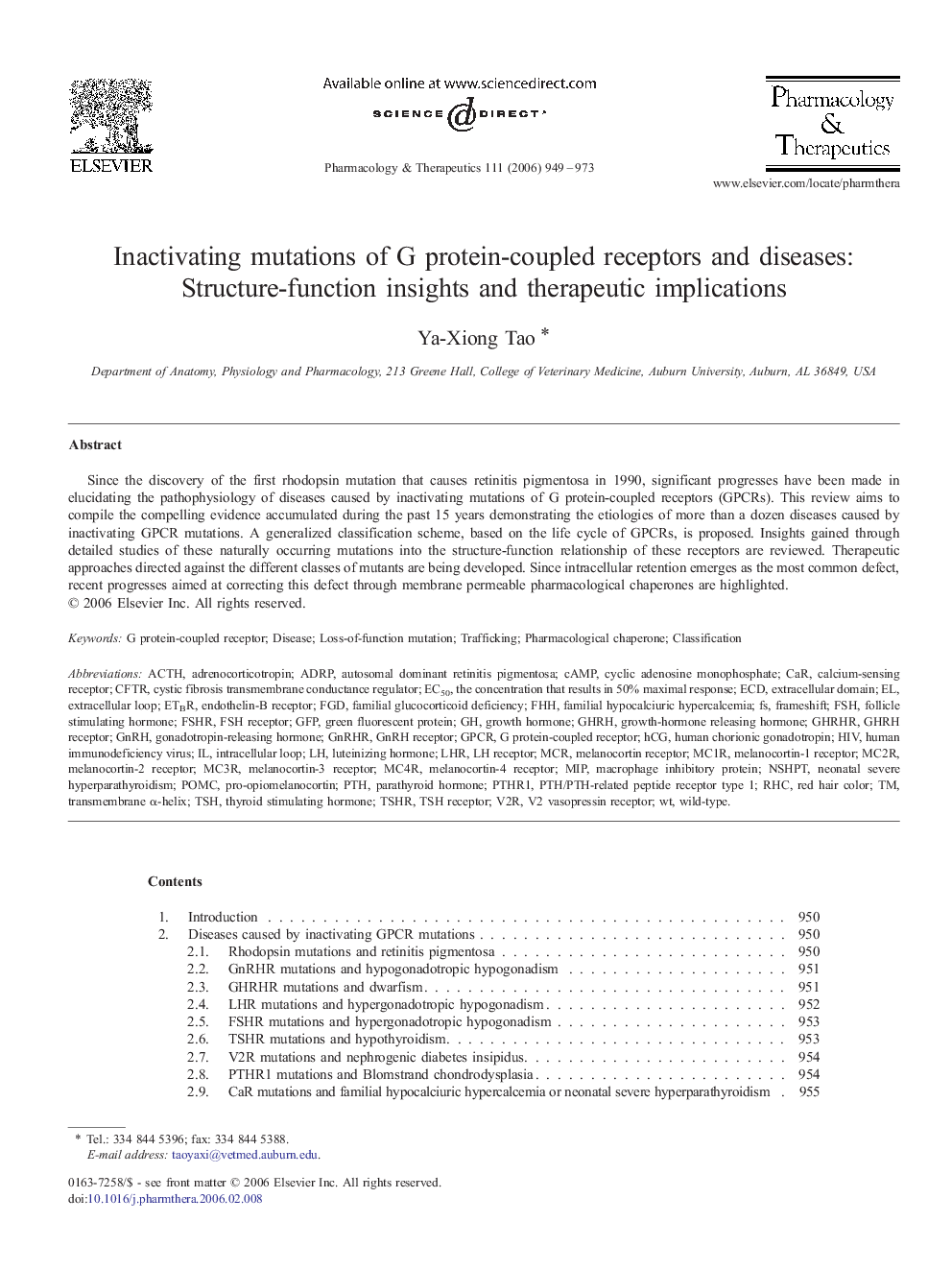| Article ID | Journal | Published Year | Pages | File Type |
|---|---|---|---|---|
| 2564304 | Pharmacology & Therapeutics | 2006 | 25 Pages |
Since the discovery of the first rhodopsin mutation that causes retinitis pigmentosa in 1990, significant progresses have been made in elucidating the pathophysiology of diseases caused by inactivating mutations of G protein-coupled receptors (GPCRs). This review aims to compile the compelling evidence accumulated during the past 15 years demonstrating the etiologies of more than a dozen diseases caused by inactivating GPCR mutations. A generalized classification scheme, based on the life cycle of GPCRs, is proposed. Insights gained through detailed studies of these naturally occurring mutations into the structure-function relationship of these receptors are reviewed. Therapeutic approaches directed against the different classes of mutants are being developed. Since intracellular retention emerges as the most common defect, recent progresses aimed at correcting this defect through membrane permeable pharmacological chaperones are highlighted.
